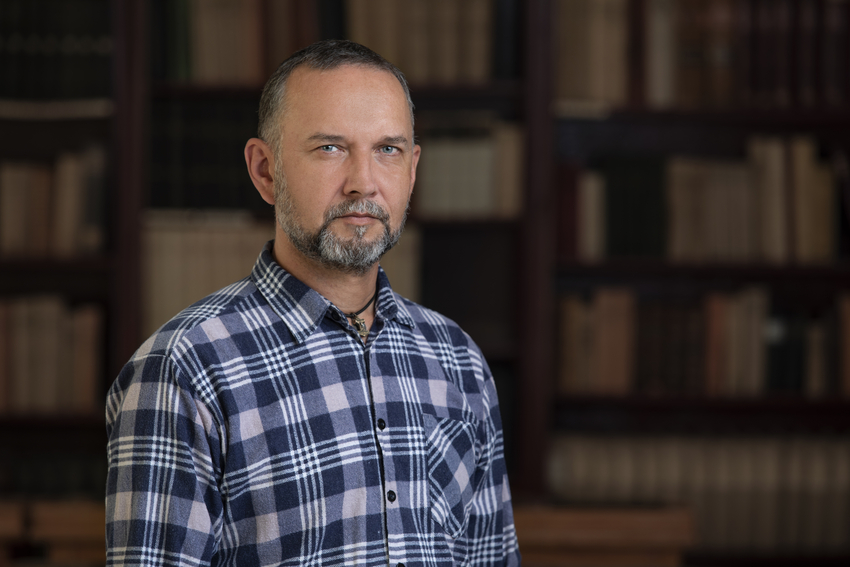 Prof. Dr hab. Przemysław Waingertner from the Faculty of Philosophy and History at the University of Lodz
Prof. Dr hab. Przemysław Waingertner from the Faculty of Philosophy and History at the University of Lodz
A state of many nations
One of the biggest problems faced by the reborning in 1918 Poland was determining the position and rights of the national minorities living there, i.e. Ukrainians, Jews, Belarusians, Germans, Lithuanians, Czechs and other smaller nations, which constituted approximately 1/3 of the country's population.
Their full equality with Poles was ensured by both the March Constitution of 1921 and the obligations signed by the Polish delegation at the peace conference in Paris. They were part of the tradition of national and religious tolerance, on which the pre-partition Polish-Lithuanian Commonwealth was founded.
The Jewish minority issue
The Jewish issue occupied a special place among the nationality issues that interwar Poland had to solve. The exceptional gravity of the relationship between the state and the Polish majority and the Jews living in the Polish-Lithuanian Commonwealth resulted from several reasons: their numbers – they constituted as much as 10 percent of the citizens of the young state; the centuries-old tradition of peaceful coexistence of both nations within the borders of the Polish state; the influence of representatives of the "chosen nation" (closely monitoring the situation of their compatriots in the reborn state) in international opinion-forming, political and economic circles; finally, from the aversion to Jewish fellow citizens expressed by the strong national camp in the Second Polish Republic, which saw them as economic competition for the Polish element.
Regulation of Jewish rights in the Second Polish Republic
In these complicated circumstances, the Polish state regulated the situation of Jews living within its borders very quickly, and in a modern, consistent with the idea of civil rights way. Even at the dawn of independence, at the turn of 1918 and 1919, the then Chief of State, Józef Piłsudski, signed decrees granting Jews their own education, the right to conduct theological seminaries, exempting Jewish clergy from military service, and introducing equal rights for the Hebrew language in offices and courts. He also legally secured the basis for the functioning of Jewish religious communities.
Whereas the March Constitution granted Jews religious freedom and equality before the law. It also guaranteed their equal rights and the possibility of developing education and culture. These regulations made the Second Polish Republic, regardless of the anti-Semitic manifestations of Polish nationalists, a safe haven in the era of anti-Semitism, which was growing in Europe, especially before the outbreak of World War II.
Women's voting rights
A different issue, but connected with the above-mentioned common denominator, i.e. building a civil state and a society enjoying political rights (the entire society without any exceptions), was the issue of voting rights for women.
Since the 18th century, when the fight for women's voting rights was started by Olimpia de Gouges, who was beheaded during the French Revolution for preparing the "Declaration of the Rights of Woman and of the Female Citizen", women demanding access to the ballot box have come a long way. An important step they took was gaining full voting rights in the interwar Poland, which at that time was one of the largest European countries. In the reborn Republic of Poland, women actually obtained it on the threshold of independence, i.e. in November 1918. The then decree on the electoral law for the Legislative Sejm stated that "every citizen of the State, regardless of gender, is a voter to the Sejm." It also emphasized that all citizens of the state with the right to vote (and therefore also... female citizens) are eligible to be elected to the Sejm.
Umbrellas and Piłsudski's windows
Piłsudski was a politician previously associated with the left of the party and experienced in political cooperation with women. He had no prejudice against their electoral ambitions. However, according to an anecdote, his instant decision was influenced by the admirable determination of the women themselves.
A large delegation of women, dissatisfied with the government's "indolence" in terms of work on regulating the "women's issue" (although it should be mentioned that both the Head of State and Prime Minister Moraczewski and all the ministers were extremely busy creating law, administration and the army of the emerging state) used to tap the windows of Piłsudski's headquarters with umbrellas on successive November evenings until he let them in and listened to their demands.
Women in parliament
This way, the interwar Republic of Poland in terms of women's voting rights followed New Zealand (women could vote there from 1869, but could be elected only from 1919), Australia (suffrage for women was introduced there in 1902) and Scandinavia (these laws were established in 1906-1921). However, it was ahead of the Netherlands and Belgium (1919), the United States (1920), Great Britain (1928), and even Switzerland (1971!), which is often seen by the rest of the world as an example of a civic state that should be looked up to!
Women knew how to use the rights they had won. In the Second Polish Republic, they willingly appeared at the ballot box during subsequent elections, and some of them ran (successfully) for subsequent Polish parliaments.
Source: Prof. Dr hab. Przemysław Waingertner, Faculty of Philosophy and History, University of Lodz
Edit: Communications and PR Centre, University of Lodz
Photos: Bartosz Kałużny (Communications and PR Centre, University of Lodz)
